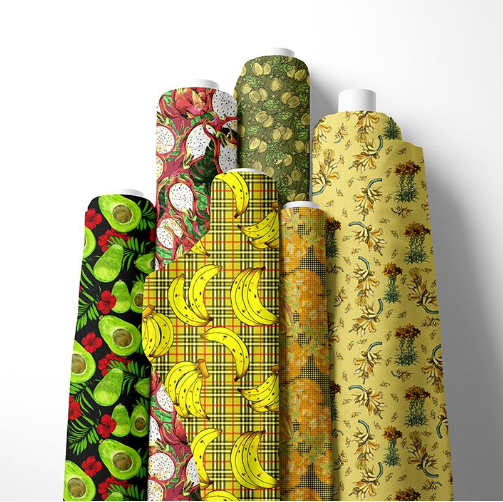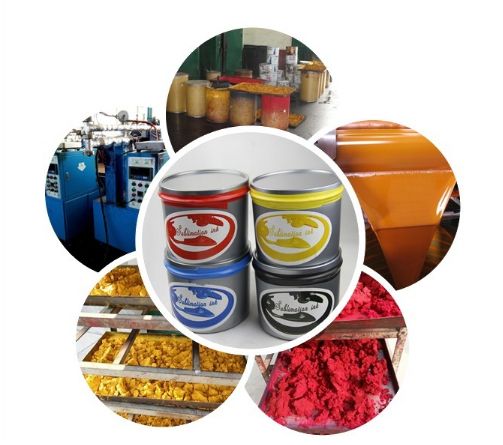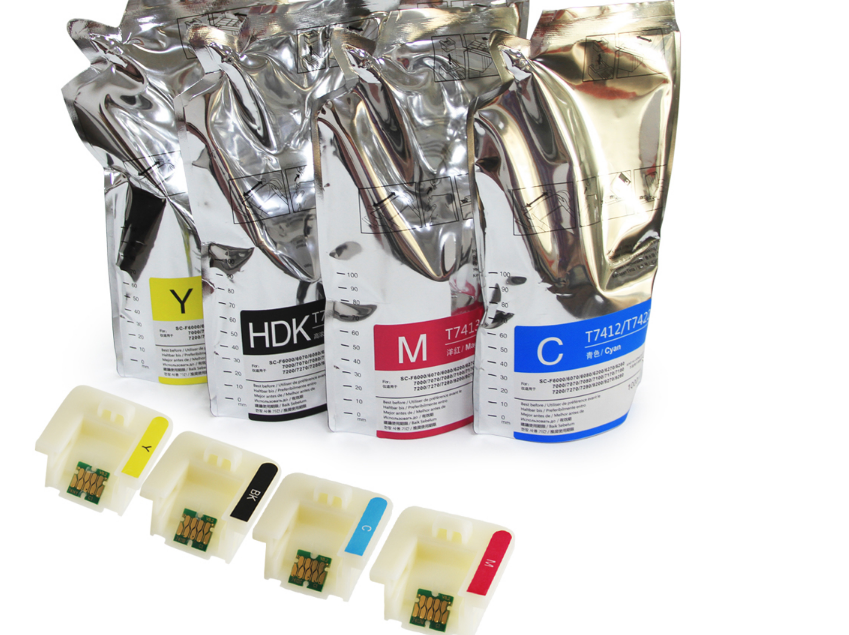
The differences and similarities between offset sublimation ink and digital sublimation ink are as follows:
Printing methods:
Offset sublimation ink: Belongs to the traditional plate printing method. A printing plate needs to be made first, and then the ink is printed on transfer paper through an offset printing press. The production of printing plates requires a certain amount of time and cost. For complex patterns and designs, the plate-making process may be cumbersome.

Digital sublimation ink: Adopts digital printing technology and is plate-less printing. The ink is directly sprayed on transfer paper through a digital printer without making printing plates. Therefore, personalized printing can be achieved quickly. It has great advantages for small-batch and multi-variety production.
Printing precision and effects:
Printing precision: Digital sublimation ink usually has higher printing precision and can achieve more delicate patterns and color transitions. For patterns and designs with high requirements for details, digital sublimation ink performs better. The printing precision of offset sublimation ink is relatively low, and it may not be as good as digital sublimation ink in detail expression.
Color stability: Digital sublimation ink is relatively better in color stability and consistency. Because digital printing can precisely control the injection amount and color of ink through a computer, reducing the influence of human factors on color. In the printing process of offset sublimation ink, factors such as the state of the printing press and the blending of ink may affect color stability and consistency.
Scope of application:
Offset sublimation ink: Suitable for mass printing production. For orders with large printing quantities, the cost of offset printing is relatively low. It is often used in large-scale production in fields such as advertising displays (such as flags, banners, etc.), light industrial products (printing on shoes, hats, boxes, bags, etc.), ceramic products, and handicrafts.
Digital sublimation ink: More suitable for personalized and customized printing needs, such as making personalized clothing, gifts, souvenirs, etc. Different patterns and designs can be quickly printed according to customer needs to meet consumers' demands for personalized products.

Equipment and cost:
Equipment: Offset sublimation ink requires the use of an offset printing press. The investment cost of equipment is high, and it occupies a large area. The technical requirements for operation and maintenance personnel are also high. Digital sublimation ink uses a digital printer. The investment cost of equipment is relatively low, the operation is simple, and it occupies a small area. It is suitable for small enterprises and individual users.
Cost: In mass production, the printing cost of offset sublimation ink may be lower than that of digital sublimation ink because offset printing is more efficient and the consumption of ink is relatively less. However, in small-batch production, digital sublimation ink has obvious cost advantages because there is no need to make printing plates, saving plate-making costs and time costs.
Similarities:
Thermal sublimation principle: Both inks are printed based on the principle of thermal sublimation. Under heating conditions, the dye in the ink will sublimate from solid to gas and then penetrate into the interior of the substrate to achieve coloring. Therefore, the printed patterns have the advantages of vivid colors, rich layers, high color fastness, and not easy to fade.
Ink composition: The main components of both inks include binders and sublimation dyes. The role of the binder is to evenly disperse the dye and have suitable viscosity, fluidity, and fixation for printing. Sublimation dyes are the key components to achieve the thermal sublimation effect and can change from solid to gas after heating.
Ink characteristics:
Transfer conditions: Both need to transfer the pattern on transfer paper to the substrate by heating and pressurizing. The parameters such as transfer temperature, pressure, and time have important influences on the printing effect.
Substrate requirements: Both inks have certain requirements for substrates. They are usually suitable for synthetic fiber materials such as polyester fiber, nylon, and chemical fiber, and some natural fiber materials after special treatment. For natural fiber materials such as pure cotton, due to the limitation of its fiber structure, the coloring effect of thermal sublimation ink is poor.

